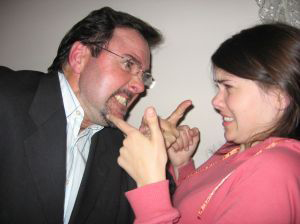Since 1993
Your Right to Confront an “Implied” Accuser

There’s lots of talk these days about “rights”. Some would even say that you must fight…for your right, to party (how many legal publications quote the Beastie Boys? Only one that I know of…). But if you’re unlucky enough to be accused of a crime, at least you are cloaked with many protective rights. Today, we’ll be discussing an important right–the right to confront your accuser. Sounds easy enough, right? Whoever accuses a citizen of a crime, that defendant has a right to confront that person or evidence. The problem becomes that many accusers/victims attempt to skirt this requirement by making references to other accusers who are not available. Such references often, mistakenly, lead a jury to believe that there is more evidence against a defendant than the defendant has an opportunity to confront. Got that? Yes, this is tough issue to sort out, but don’t worry, recently a Florida appeals court addressed just such an issue.
In State v. Ferrey, 35 So.3d 177 (Fla. 3rd DCA 2010), state witnesses made repeated references in trial to the victim’s neighbor, who was stricken from the witness list before trial and was not called to testify. The appellate court found that the multiple references to a neighbor’s testimony warranted a new trial on charges of burglary of a dwelling with assault or battery and attempted sexual battery. Basically, the references implied that someone other than victim had identified defendant as the perpetrator, giving rise to an inference that neighbor had identified defendant, in violation of Ferrey’s right to confront the witnesses against him. Let’s see how it played out.
Ferrey was charged with burglary of a dwelling with assault or battery, and attempted sexual battery. At trial, the victim testified that she was awakened from her sleep by a man grabbing her by the throat and attempting to sexually assault her. She screamed, causing the suspect to run from the house. In response to the question of whether or not she saw her attacker in the courtroom she pointed hesitantly at Ferrey, and testified that she could not make out the details because the room was dark, further noting that Ferrey looked a little different there in court. She then claimed she was “almost sure” he was the assailant, then making references to her neighbor Carlos.
But now, the confrontation problems begin to mount. The lead detective next testified that he obtained information from the victim’s neighbor, Carlos. The trial court sustained several objections from the defense for mentioning Carlos, the absent witness, and the hearsay containing Carlos’s statements inferring that Carlos actually had observed the suspect. The trial court instructed the prosecutor “not to mention Carlos or elicit any testimony referring to Carlos and warned that she would grant a mistrial if the State continued to suggest that there was additional evidence of guilt that the jury would not hear”. Id.
During jury deliberations, the jury asked the court whether they could use the references to Carlos made during trial, and the trial court properly answered “that the statement had been stricken and they could not use it in their deliberations.” Ferrey was found guilty by the jury on all counts.
The appellate court began their analysis with a look at Postell v. State, 398 So.2d 851 (Fla. 3d DCA 1981). “In Postell, the prosecutor elicited, through the testimony of a police officer, the out-of-court declarations of an unidentified eyewitness to the armed robbery with which Postell was charged. In that case, the Third District held that, “where, as in the present case, the inescapable inference from the testimony is that a non-testifying witness has furnished the police with evidence of the defendant’s guilt, the testimony is hearsay, and the defendant’s right of confrontation is defeated, notwithstanding that the actual statements made by the non-testifying witness are not repeated.” Id. at 854.” Id.
Ferrey’s convictions were overturned, based upon the above analysis in Postell, finding that “the logical inference that followed this challenged inadmissible hearsay was that Carlos, a non-testifying witness, gave the detective accusatory information which ultimately led to Ferrey’s photo being placed in the lineup, and his subsequent arrest. This violated Ferrey’s right to confront witnesses against him and prejudiced his right to a fair trial. We find that the error was pervasive, not harmless in light of the jury’s questions about this evidence, and the trial court did not abuse its discretion by granting the motion for new trial.” Id.








